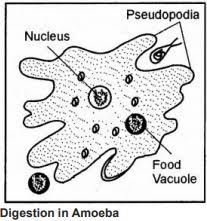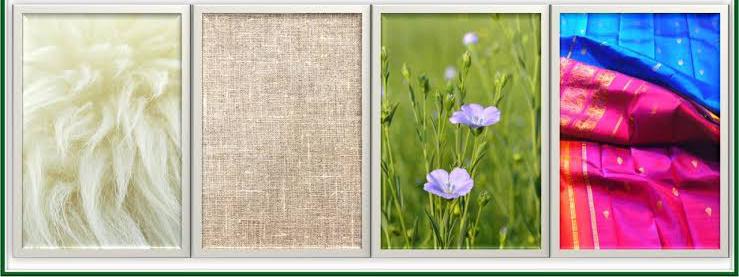- Books Name
- CBSE Class 7 Science Book
- Publication
- Param Publication
- Course
- CBSE Class 7
- Subject
- Science
NUTRITION IN AMOEBA
Amoeba feeds on minute microscopic organisms or bacteria. It is a microscopic single celled organisms. The mode of Nutrition in Amoeba is Holozoic in which solid food is engulfed in following steps:
Ingestion:- When Amoeba comes in contact with prey, the finger like Pseudopodia surrounds it and engulf it. This food is trapped in a food vacuole. This food vacuole now moves into the cytoplasm.
Digestion:- Food in the food vacuole is digested by digestive enzymes secreted by cytoplasm. The reaction in the food vacuole is first acidic due to HCl and than becomes alkaline. In acidic medium prey is killed. In alkaline medium the prey is digested.
Absorption:- Digested food now diffuses into the cytoplasm and used for energy growth and repair.
Egestion :- Now food vacuoles moves to the body surface and than ruptures, so undigested food expelled out of the body at any point because amoeba has no Anus.

Feeding and digestive in Amoeba

The process of digestion in amoeba is very simple and short. Amoeba don’t have mouth and digestive system .Then don’t u have a question , How they eat food ,digest food and excrete food .Amoeba eats microscope ,after it has the feeling of near by food.It extend its pseudopodia all over the food and consume it .Then the food enters into the food vacuole which contain some digestive juice .The action done by food vacuole on food convert it into smooth substance .The digested food used to grow , reproduction , etc by amoeba.
Fibre to fabric
Animal skin and leaves were utilised to cover the body of early men. However, as time went by, humans perfected the art of extracting fibres from plants and animals. Subsequently, humans began weaving them into garments. Since the prehistoric era, there has been continuous change, advancements, and modifications in all the basic needs of human beings, including food, shelter, and clothing to make our lives comfortable.Fibres are extremely long, flexible, and thin thread-like structures of a natural or artificial substance. Yarn is made from fibres. Furthermore, these yarns are combined to form different types of fabrics. Fibres are classified into two types based on origin: natural fibres and synthetic fibre.


 Param Publication
Param Publication
 Grow Career Publication
Grow Career Publication
